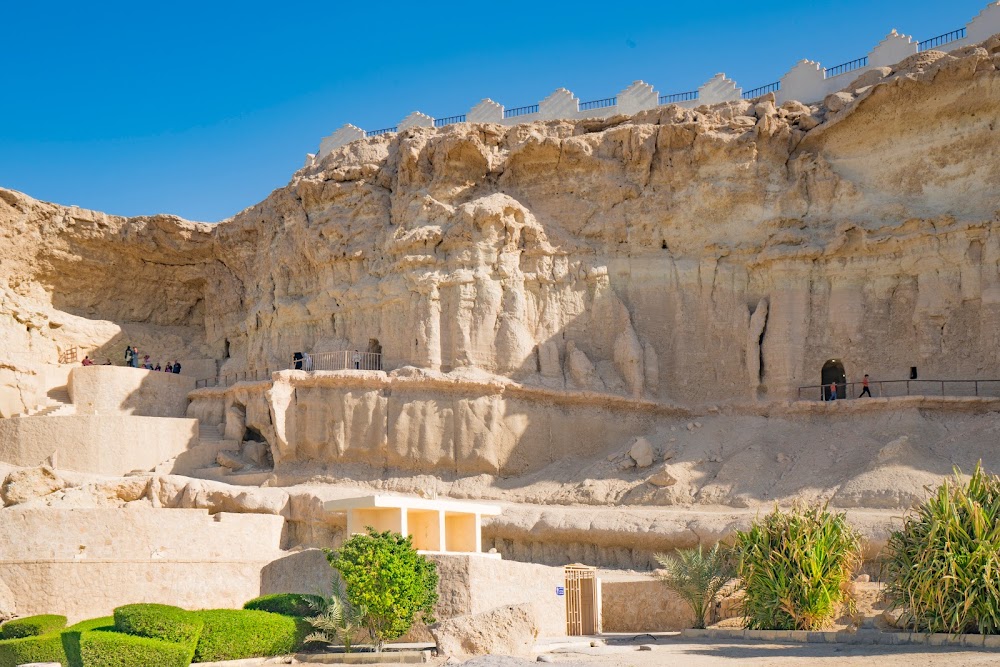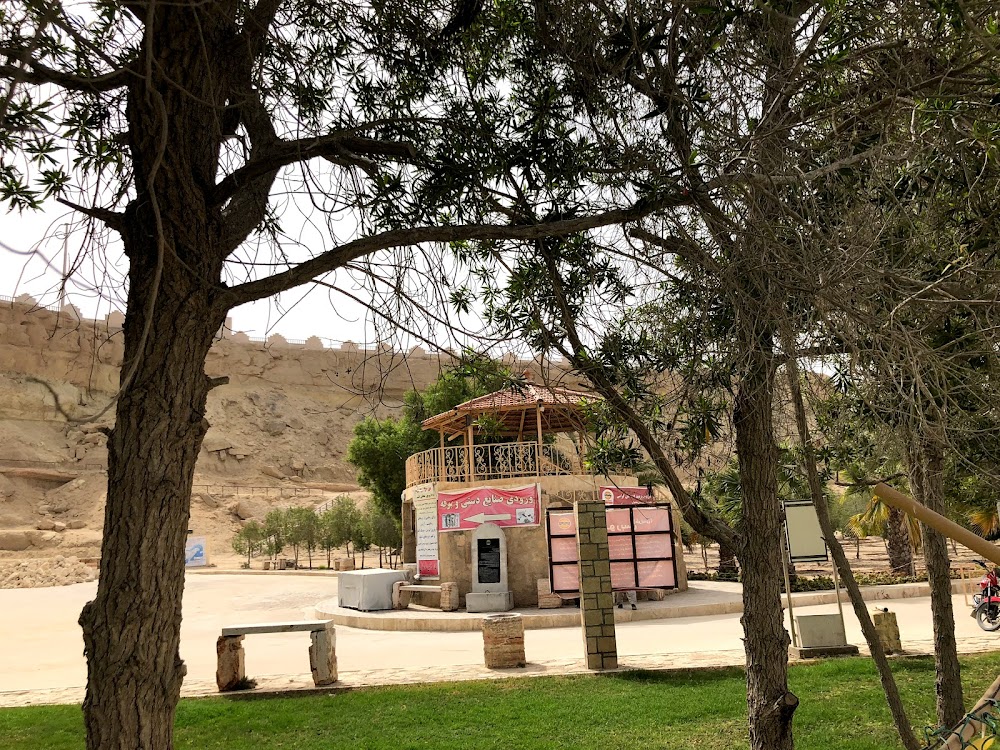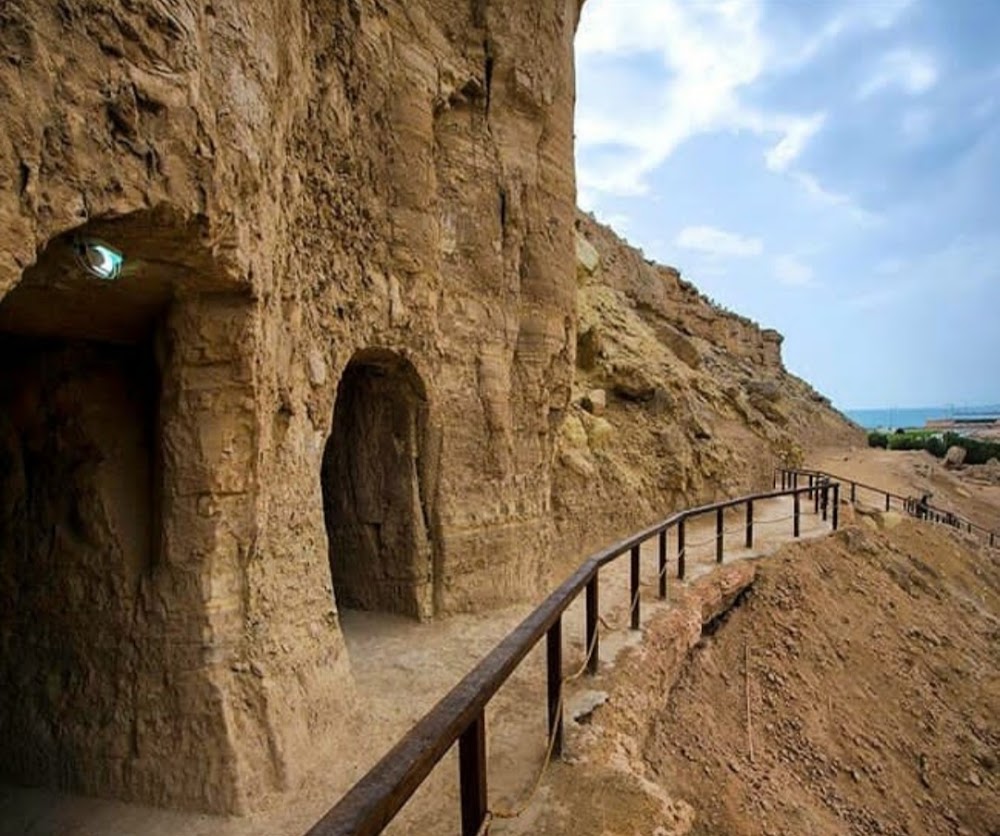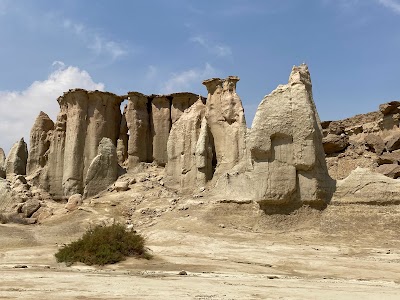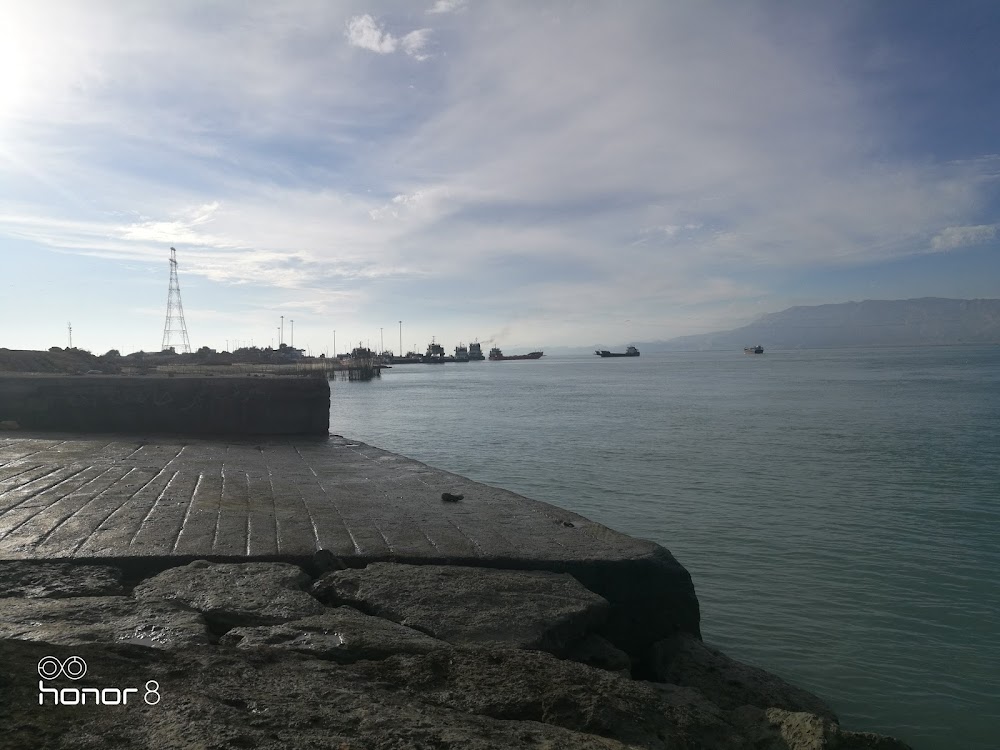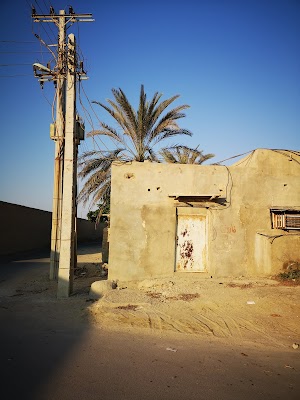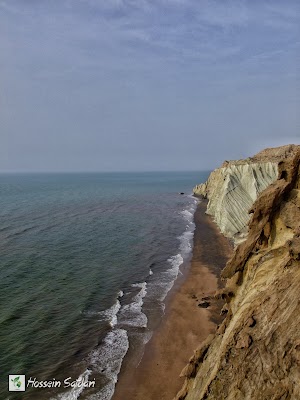Kharbas Caves (غارهای خربس)
Related Places
Overview
The Kharbas Cave, nestled in the captivating Hormozgan province of Iran, is a remarkable historical site that draws numerous visitors each year. Carved into the majestic cliffs near the city, these caves exude an ancient and mysterious charm that intrigues all who enter. Dating back to the era of the Median Empire, around the 7th to 6th centuries B.C., the caves hold a rich historical significance that continues to captivate modern explorers.
The Kharbas Cave is believed to have served as a sanctuary and place of worship for the Zoroastrians, the predominant religious group in Persia before the advent of Islam. Their significance lies not only in their age but also in their role as a refuge for followers of one of the world's oldest monotheistic religions, illustrating the deep spiritual heritage of the region.
Constructing these caves was no small achievement; ancient craftsmen utilized rudimentary stone and metal tools to meticulously chisel through the hard rock. They crafted an elaborate network of interconnected chambers and passageways, indicating that significant planning and effort were involved in their creation. The various rooms, each designated for specific purposes, highlight the remarkable talent of these early architects in harmonizing their work with the natural formations of the rock.
The caves are structured into multiple levels, connected by steps carved directly into the stone. The upper levels likely served as living quarters, while the lower chambers may have been used for storage or ceremonial activities. Some sections of the caves display signs of expansion or modification over the centuries, reflecting the evolving needs and cultural influences of the people who inhabited them.
One of the most fascinating features of the Kharbas Cave is the presence of ancient carvings and inscriptions, which offer valuable insights into the cultural and religious practices of the time. These intricate depictions showcase scenes from Zoroastrian mythology, sacred symbols, and scripts that scholars are still striving to fully interpret. They stand as a testament to the artistic talents and spiritual devotion of the early inhabitants.
While many original features have withstood the ravages of time, some have suffered from natural erosion and human activity. Local authorities and historians have initiated preservation efforts to safeguard the caves from further degradation. Tourism is encouraged, but it comes with a strong emphasis on conservation, ensuring that future generations can also experience and learn from this extraordinary site.
Ultimately, the Kharbas Cave embodies a profound symbol of resilience and spirituality. Its rock walls resonate with echoes from ancient civilizations, offering a rare glimpse into a world that has long since faded. The unyielding stone and silent chambers invite every visitor to step back in time and reflect on the enduring spirit of human creativity and faith.


